|
BULB LOG 42 18th October 2006
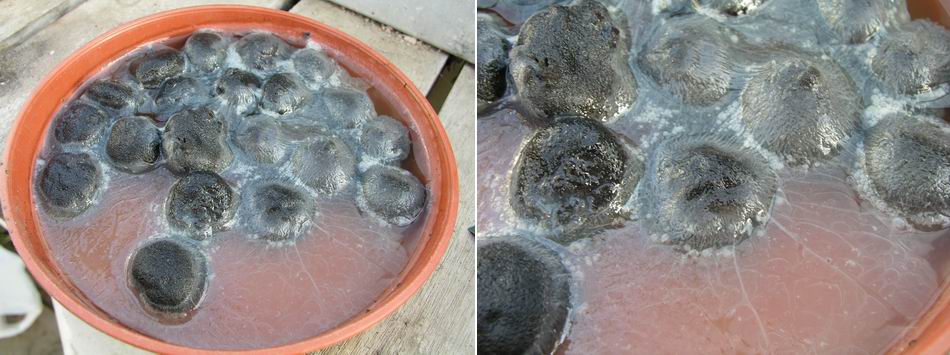
Anemone blanda
Another lot of bulbs that we brought back from the discussion weekend was some Anemone blanda corms, they were a very good size but a bit dry as you would expect having been stored out of the ground since they were harvested some months ago. Anemone blanda is well able to cope with this treatment with no ill effects but to get the best results you should soak the corms in water for at least 24 hours to rehydrate them. You will be amazed at just how much they will swell up and this gives them a good head start to produce a wonderful display of flowers in February and March. The one thing that did surprise me was the starch like substance that appeared on the water. I have not noted this before as I usually only soak them for 24 hours but this time I got distracted onto other tasks and left them soaking for a number of days resulting in this interesting scum on the surface of the water.
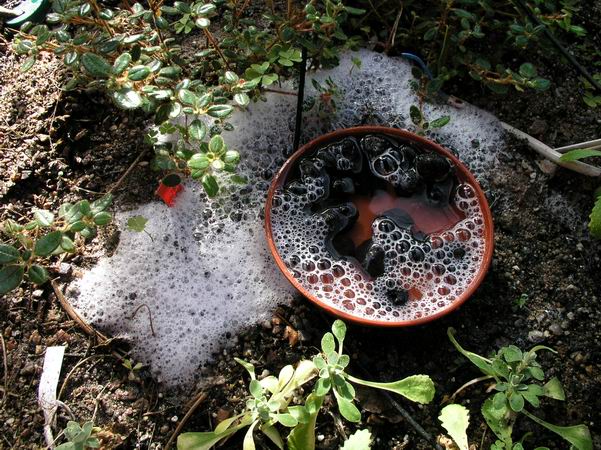
Anemone blanda frothing
I rinsed the corms with water and poured the washings onto the sand bed of cuttings below one of the bulb plunges and got a wonderful froth of bubbles. It is not surprising that anemone blanda can survive long periods out of the ground when it covers itself in this proactive coating of natural size to lock in their moisture content. This also underlines the benefit of giving them a good soaking before planting them to break down this protective layer because what locks in moisture also locks out moisture and slows down the growth of their roots.
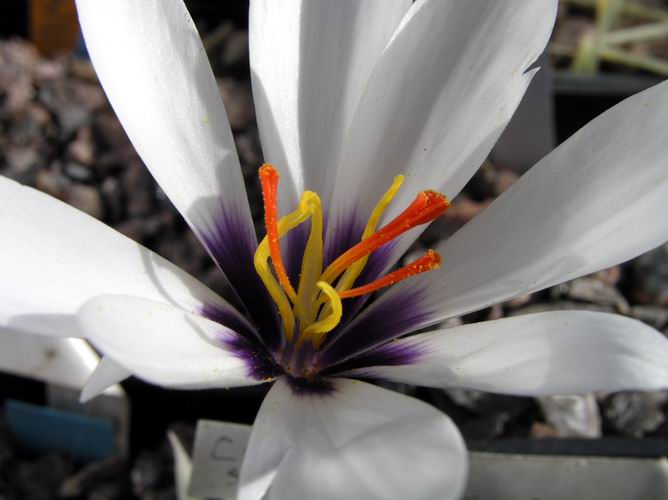
Crocus mathewii flower
The first of our Crocus mathewii flowers opened in the sunshine a few days ago and it is truly a wonderful combination of colours when seen in its best form. There is much discussion as to whether it is a true species or not and are the pale forms without this dramatic colour combination still Crocus mathewii? It would be terrible if it has to be reduced to no more than a forma or a variety of its close relative C. asumaniae from which the description states 'it differs from its close relative by the creamy white flowers and the deep violet-blue throat' - if it is, it will most likely be the great man himself, Brian Mathew, who will have to pronounce and sink this taxon. As it is I think that it is wonderful that one of the most beautiful flowers of all crocus carries the name of the one of my all time bulb heroes.
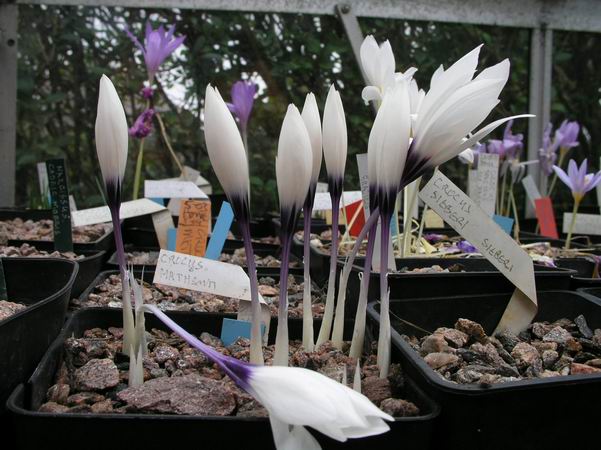
Crocus mathewii
A few mild days on and several more flowers have shot up overnight but a lack of sunshine and the extra warmth that it brings means we have not seen these flowers open their faces.
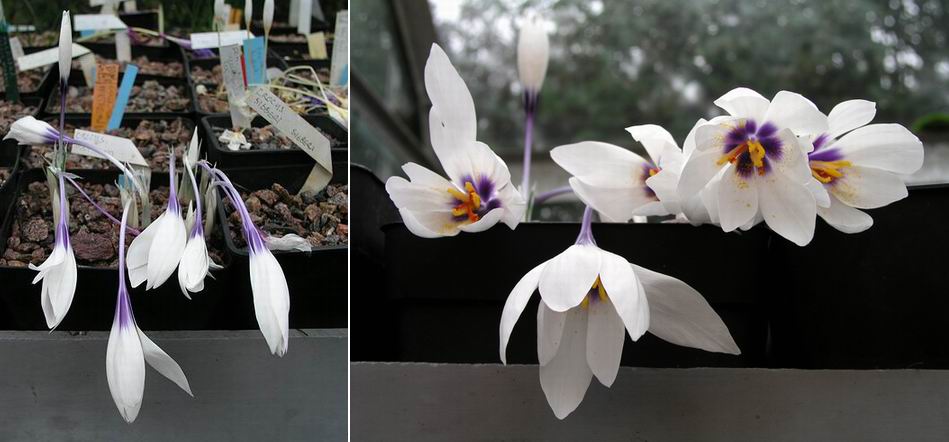
Crocus mathewii next day
Today the flowers have all flopped over without having opened at all. I did prise them open yesterday to pollinate them in the hope of getting a good seed set. Pollination is usually successful and I have had reasonable good seed crops from it over the last few years. I hope to see the first flowers from this seed, if not this year then next, and it will be interesting to see what variation there is in the seedlings. A quick trip out after lunch and the flowers have started to open even in their flopped over condition, I will have another go with the paint brush to ensure a good transfer of pollen.
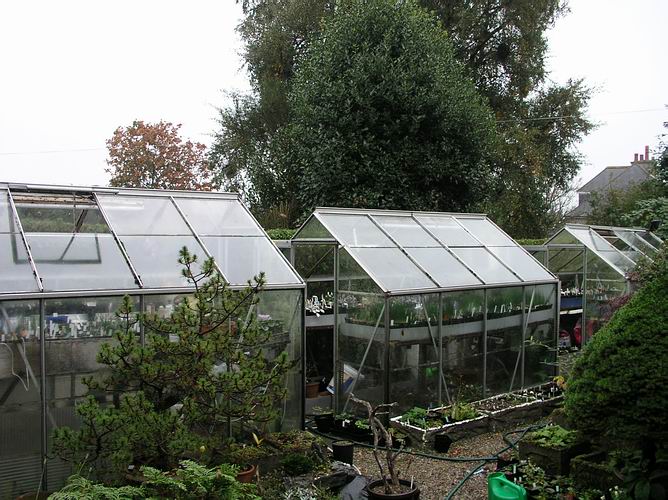
Bulb houses
I do not know if you can get an impression of how dreich the weather is here in Aberdeen just now. Dreich is a Scottish word that means wet,dark and dreary and that absolutely describes the conditions we have had for a number of days however the temperatures are still above the seasonal average, sitting at 12C today, Wednesday, at 13.00 hours. I much prefer the colder bright days we often get at this time of year when the sunshine in the middle of the day gives not only good light but raises the temperature in the glasshouses to encourage the crocus flowers to open. However it is well worth taking the time to open your flowers if they are not obliging to pollinate them as the pollen will grow well and fertilise the seeds in these temperatures even if the light and sunshine are hidden by dense layers of grey clouds.
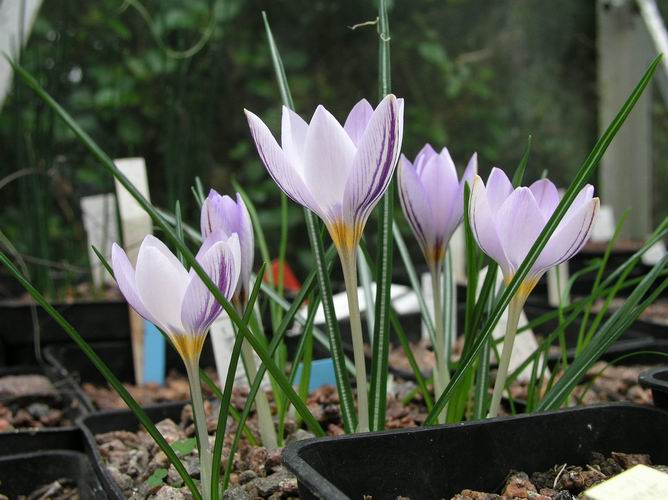
Crocus laevigatus
Not all Crocus flowers refuse to open unless the sun is shinning, some open by temperature, some by light levels, some by a combination of these two parameters and a few once they have opened never shut again until they wither. Today the first of our Crocus laevigatus opened; we have many pots of this species mostly raised from seed and they all flower at very different times from this, the earliest, to the latest ones which will not flower until February. This is definitely a species that cannot decide if it is an autumn, winter or spring flowering species and it is well worth growing several pots for not only this range of flowering time but the variation in the markings of the flowers.
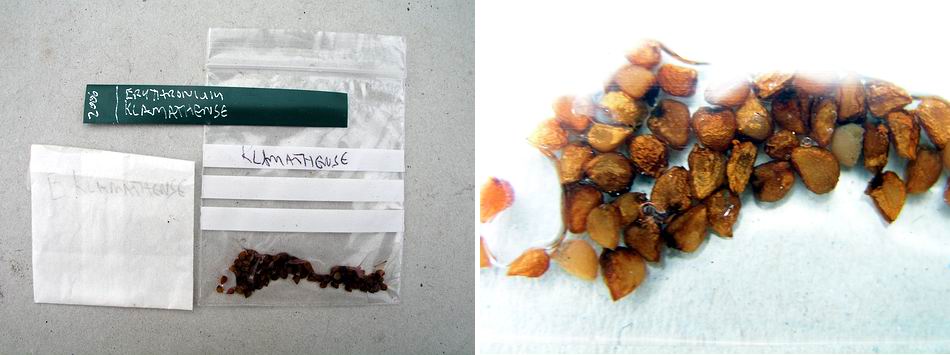
Erythronium klamathense seed
I have been pressing on trying to catch up with all my garden jobs such as sowing the last of our own garden collected seeds and this week it has been the turn of my erythronium seed. Having been stored in paper packets over the summer months I transferred them into plastic packets and added a little water to allow them to soak over night - just like the anemone corms, the seed rehydrate, swelling as they take up the moisture. I know this seems silly to store the seed dry and then soak it before I sow it why not just sow it fresh in June when it is ripe? Well I have tried that in the past and I never get the best germination rate that way, the reason being that a normal Aberdeen summer has a lot of dreich days and many of the bulbous seeds which are used to a warm dry summer, rot off if exposed to our conditions. The exception to this is self sown seed which germinates well because the garden beds offer a much better more stable environment than I can provide in plastic or clay pots.
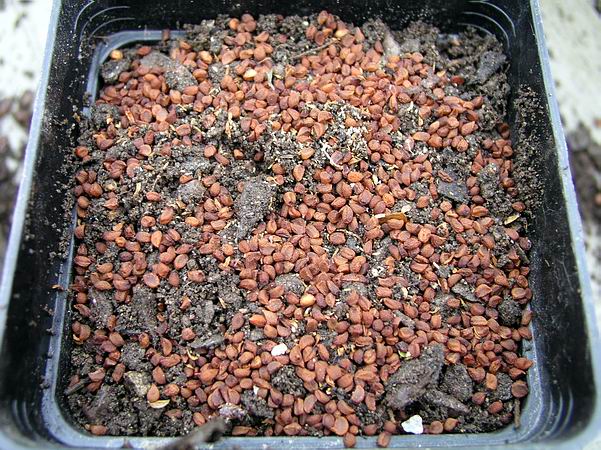
Sowing Erythronium seed
As with all our bulb seed I sow pretty thickly without any ill effects as the seedlings thrive on close company - completely the opposite to growing cushion plants which need plenty room.
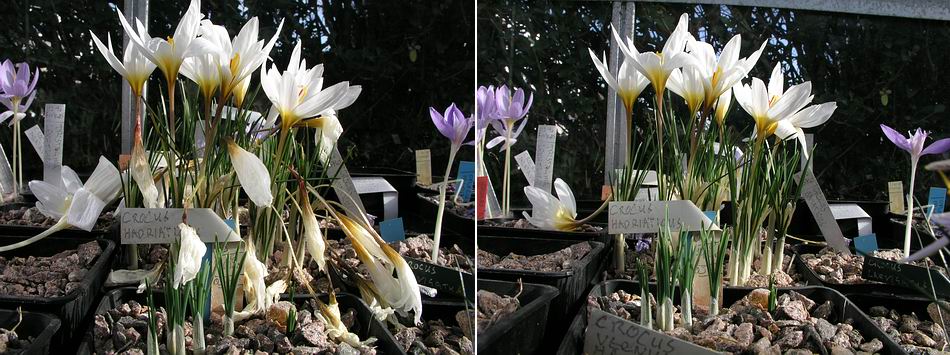
Crocus flowers going over
As the flowers of the crocus go over it is essential to remove them as they will quickly attract rots such as botrytis which can transfer on to the leaves and down to the corm, if it gets a hold. Notice I have removed all the faded flowers from this pot in the picture on the right by giving them a sharp tug upwards while placing my fingers on the gravel to prevent disturbing the corm below. Yet another good reason that I love crocus is that most of them send up a second flush of flowers a few days or a week after their first flowering. This feature is part of their survival mechanism so if their first flowers coincide with poor weather conditions and not many pollinators then they have a second chance. We also benefit from his with two wonderful displays of blooms and must in turn reward the plant by pollinating with the paint brush to get the seed set we all want.
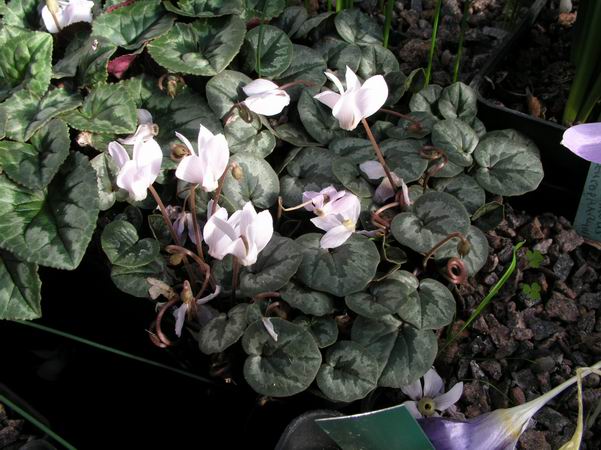
Cyclamen intaminatum
Removing the dead flowers also applies to cyclamen which drop their flowers once they are past. The dropped flowers lie either on top of the leaves or down on top of the corm where they too will start to rot and cause infection to spread into the plant if they are not cleared up on a regular basis.
Narcissus cantabricus and 'Camoro'
The first buds have appeared on several of the forms and hybrids of Narcissus cantabricus such as foliosus on the left and N. 'Camoro' on the right. This is absolutely in line with my prediction that, if we have mild weather when the roots are forming, then the Narcissus will flower early.
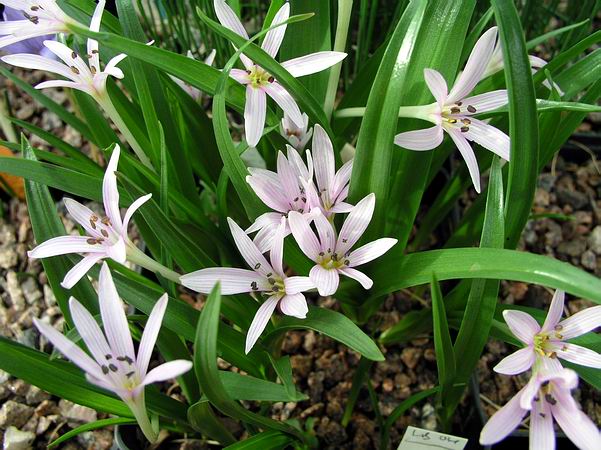
Colchicum coustourierii
Other bulbs that have been flowering in the last few weeks are this Colchicum coustourierii, which I received as a single bulb several years ago and really must find out more about. Its leaves are very well developed by the time the flowers appear.
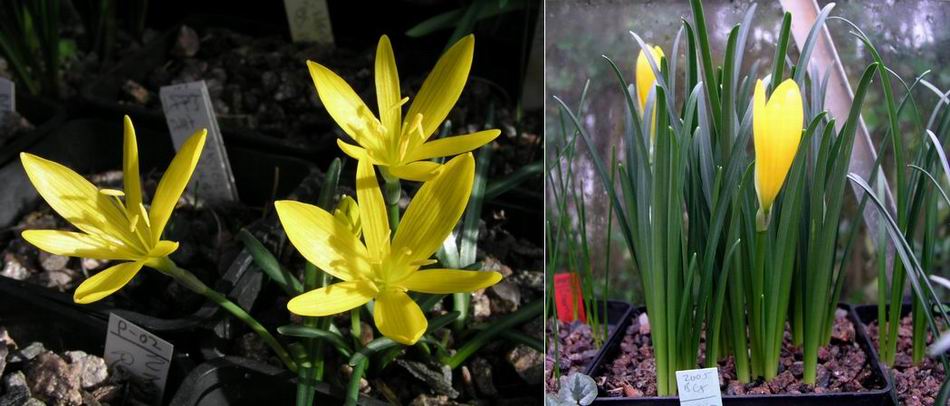
Sternbergia sicula and lutea
The last few Sternbergias (sicula, left and lutea, right) are still blooming and they also have well developed leaves. There have been some questions asked in the forum regarding when to apply the first supplementary feed with potash. With the likes of the colchicum and the sternbergia, where the leaves are very well developed, there may be an advantage to give them a top dressing of potash now but with most of the crocus I will hold off until early next year unless the very mild conditions continue and they have put on most of their leaf growth before then. I will show you when I apply it on the log and if you want to reread my feeding regime you will find it on bulb log 7 of 2005.
^ back to the top ^
|

